Abstract
Applied behavior analysts have focused on how adults can influence the problem behavior of children using a variety of behavior modification strategies. A related question, virtually unexplored, is how the behavior problems of children influence adults. This child-effects concept was explored empirically in a study involving 12 adults who were asked to teach four pairs of children in which one member of the pair exhibited problem behavior and the other typically did not. Results demonstrated that problem children displayed tantrums, aggression, and self-injury contingent on adult instructional attempts but not at other times, whereas nonproblem children showed little or no problem behavior at any time. Importantly, from a child-effects perspective, adults engaged in teaching activities with nonproblem children more often than with problem children. Also, when an adult worked with a problem child, the breadth of instruction was more limited and typically involved those tasks associated with lower rates of behavior problems. The implications of these results are discussed with respect to theories of escape behavior, current assessment practices, and intervention issues related to maintenance. The existence of child effects suggests that problem behavior may be better understood when it is conceptualized as involving a process of reciprocal influence between adult and child.
Full text
PDF
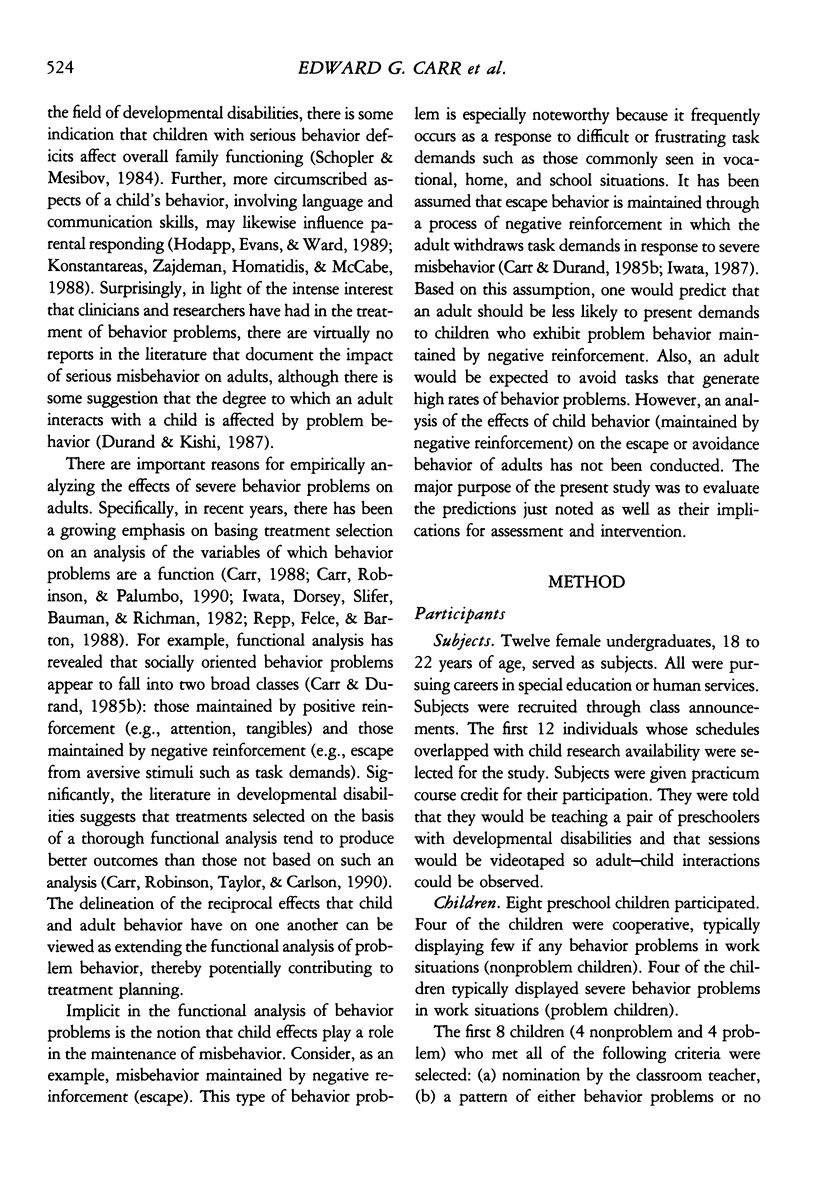

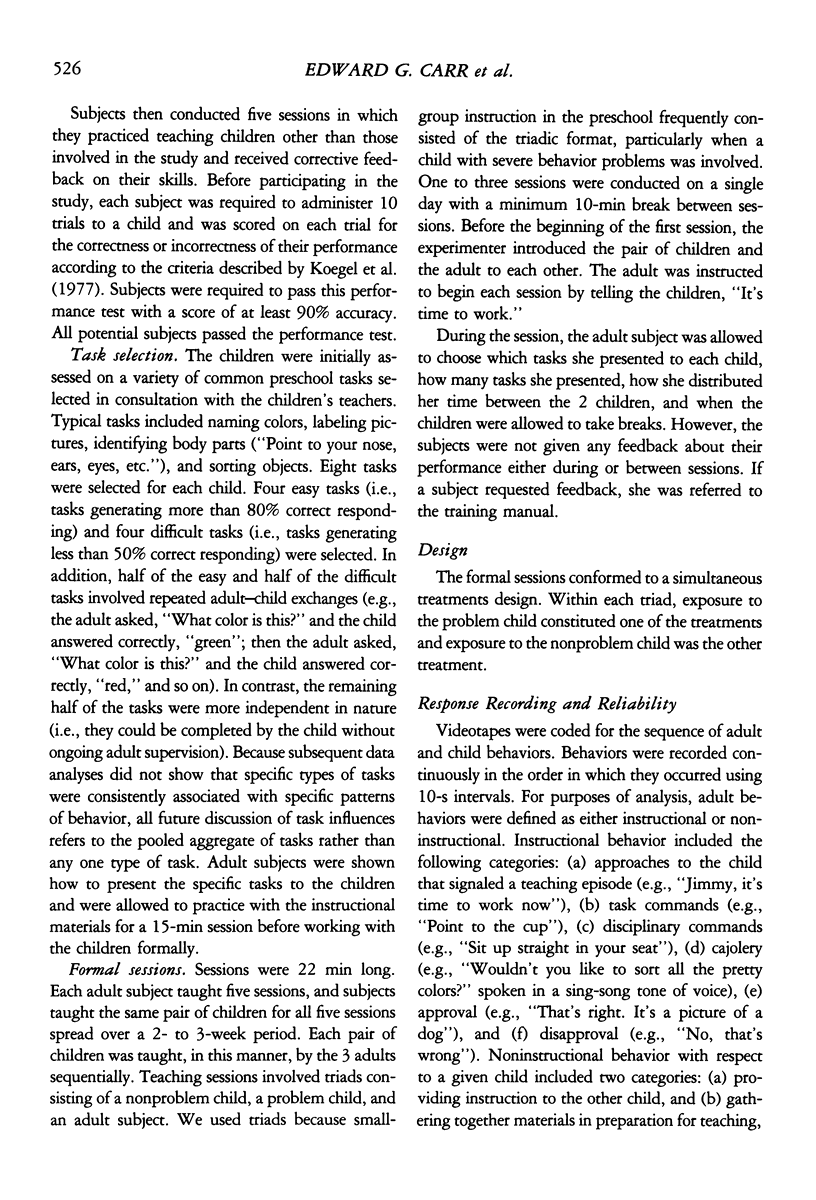
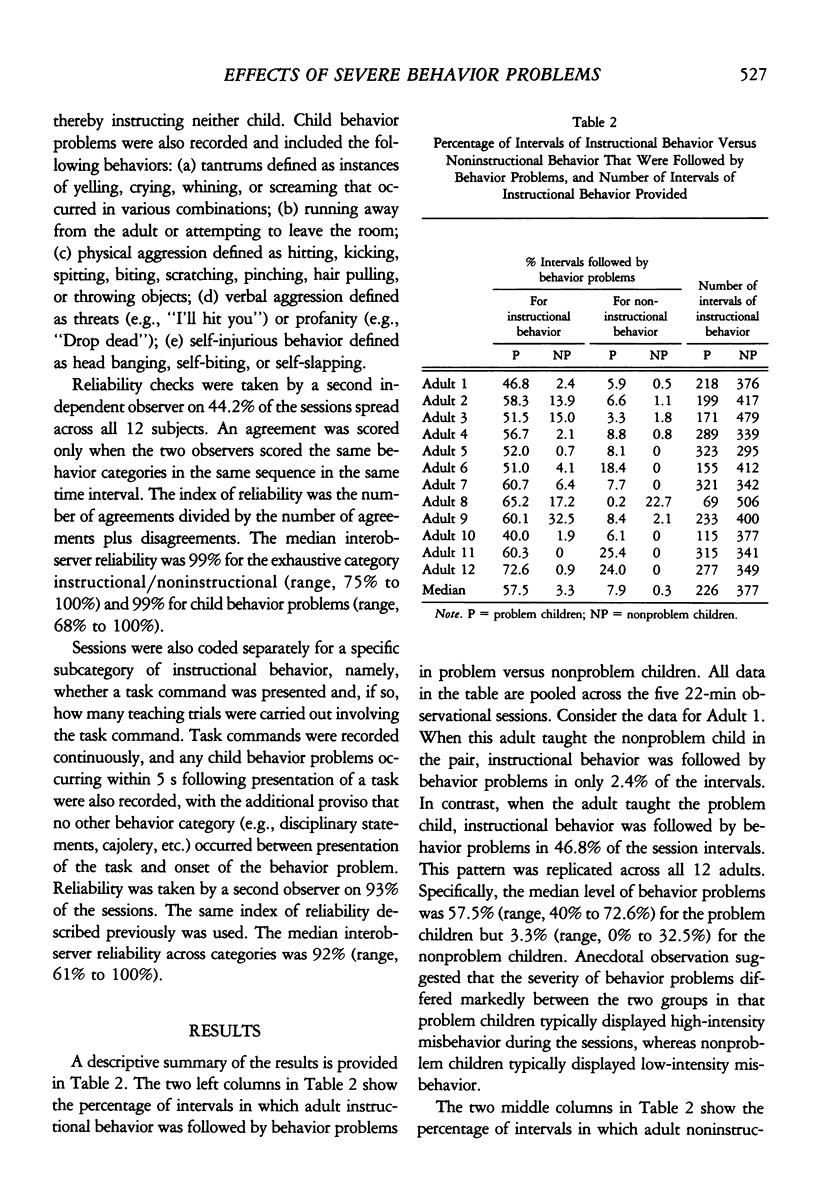
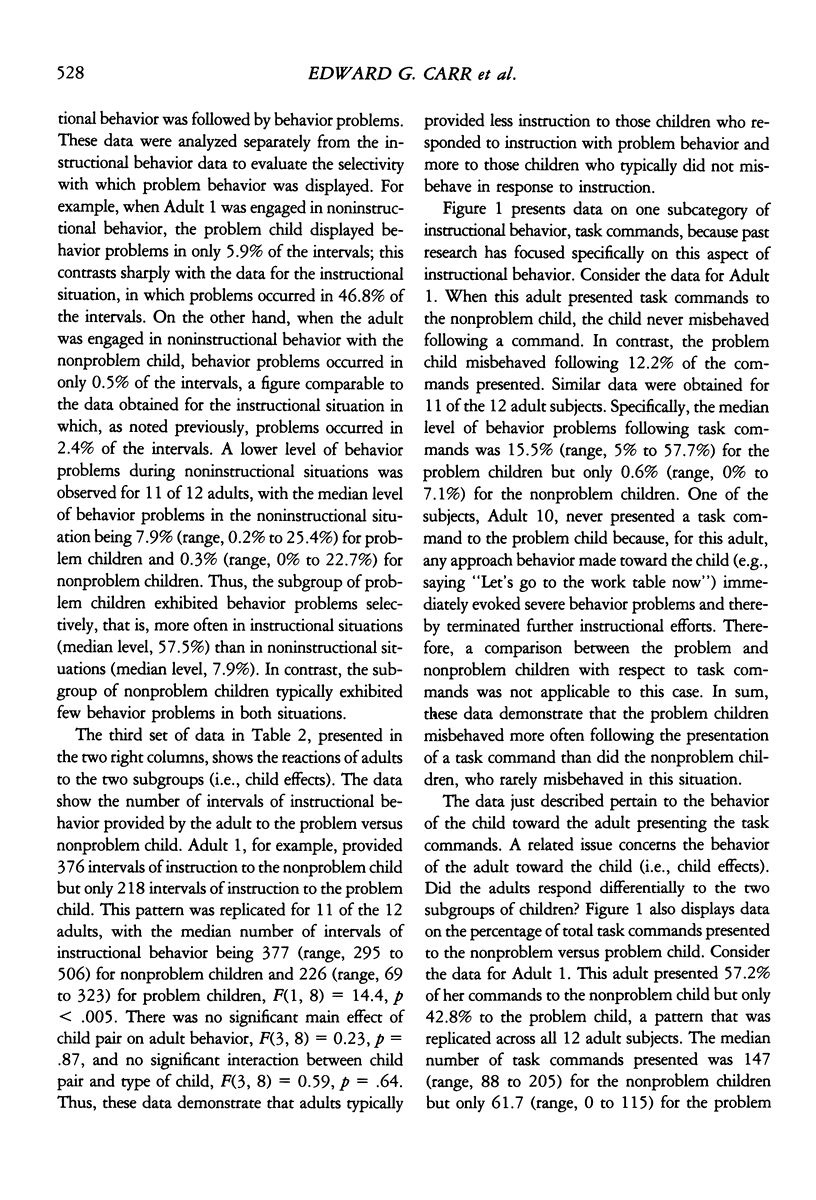



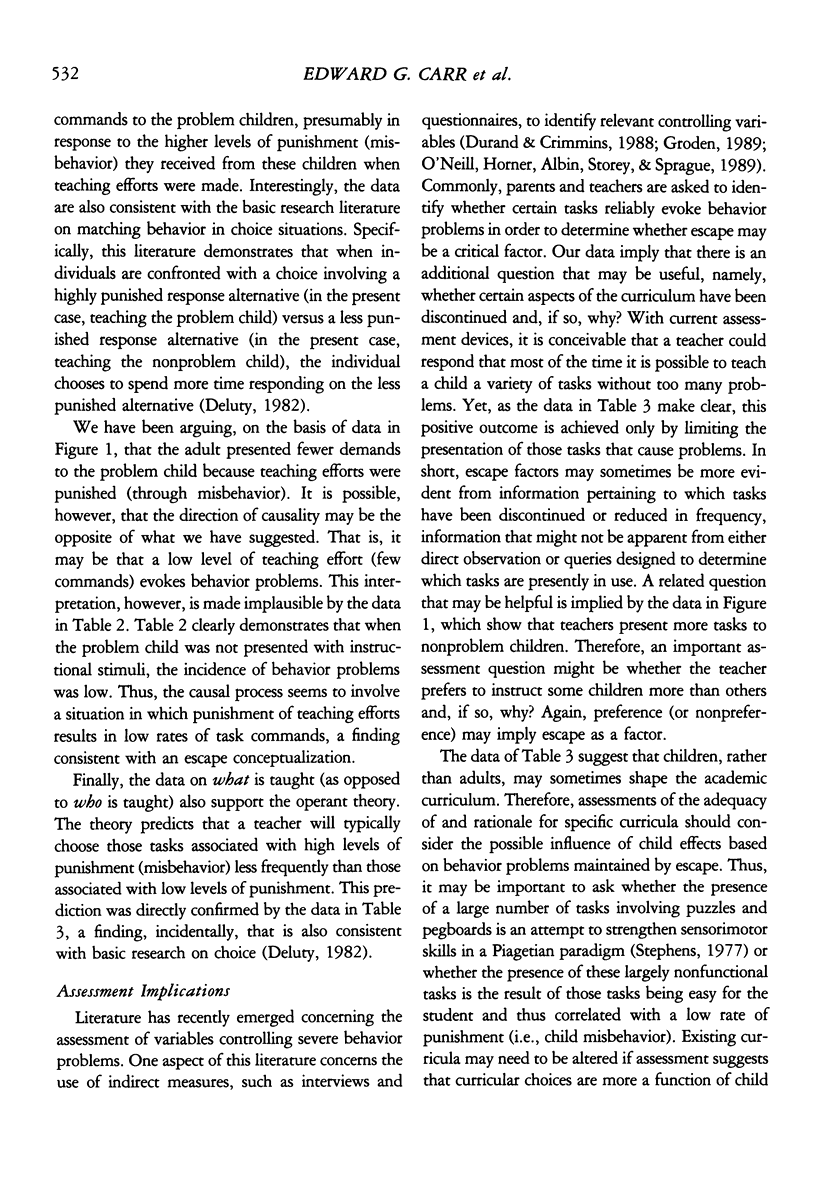
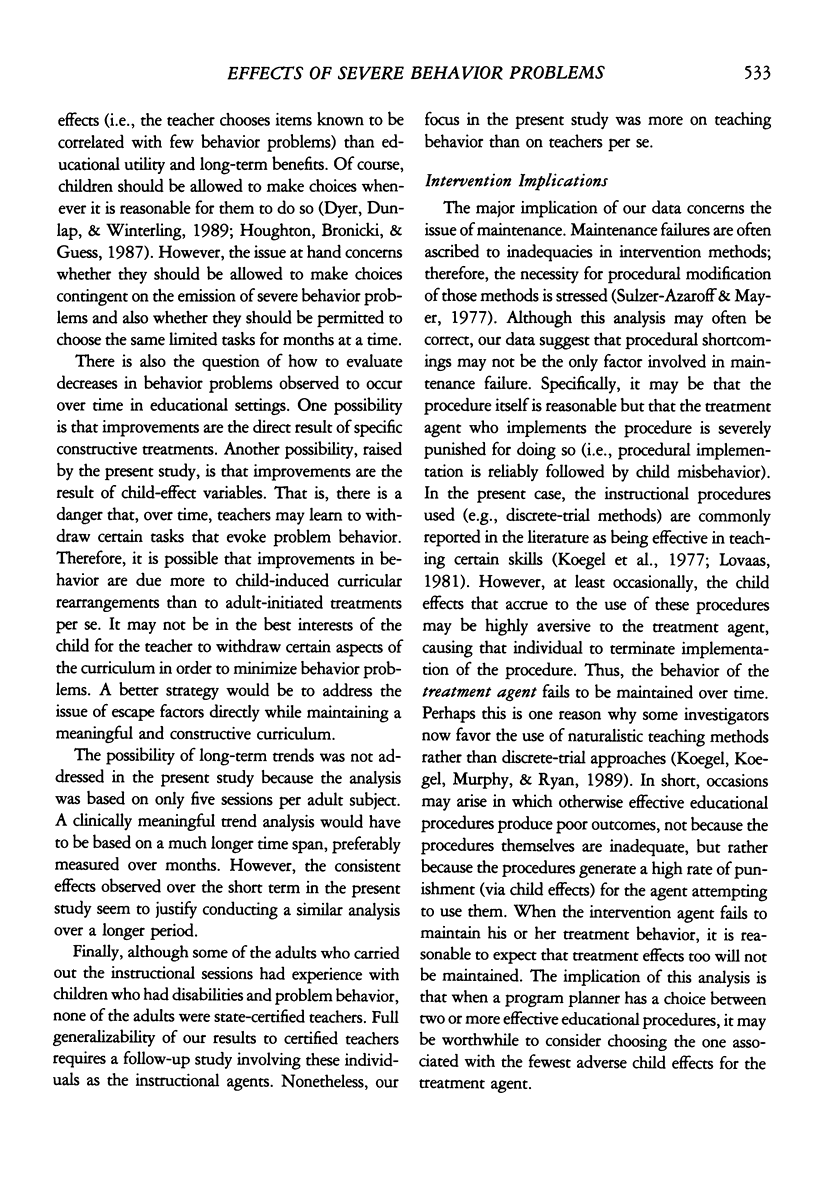
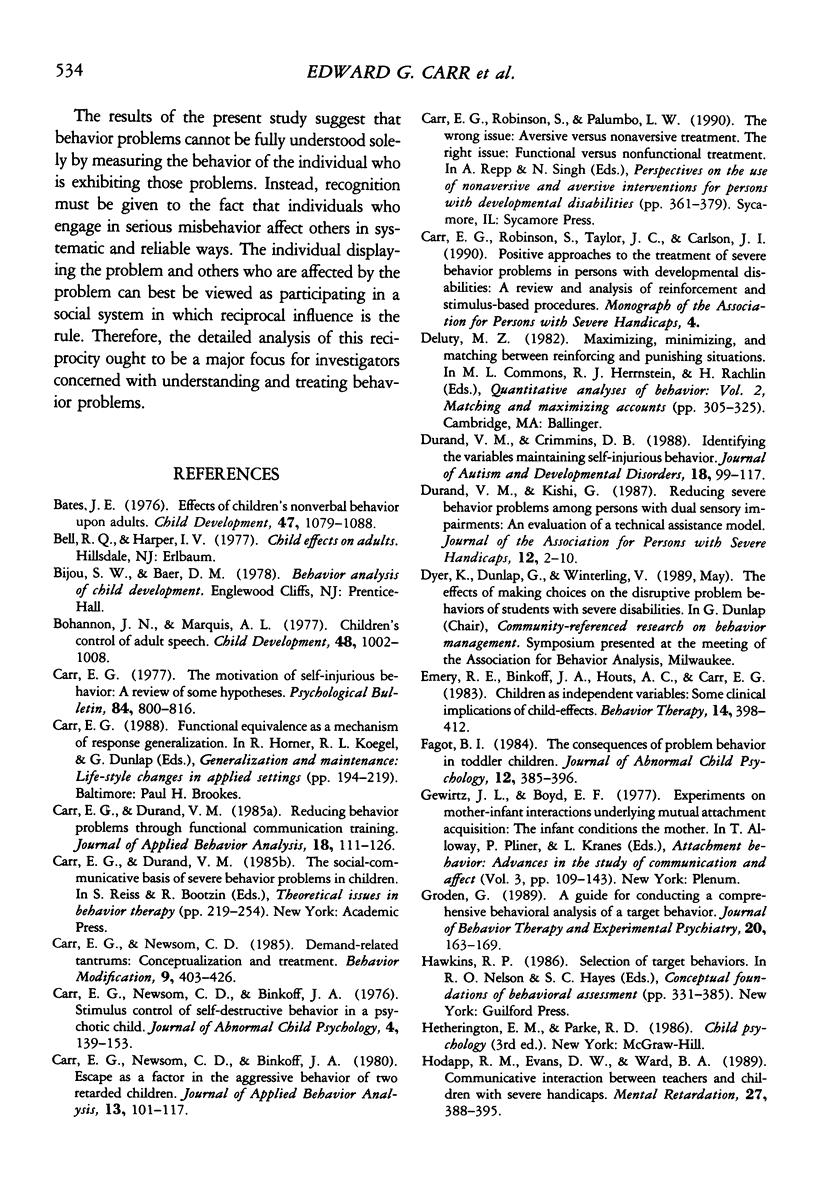
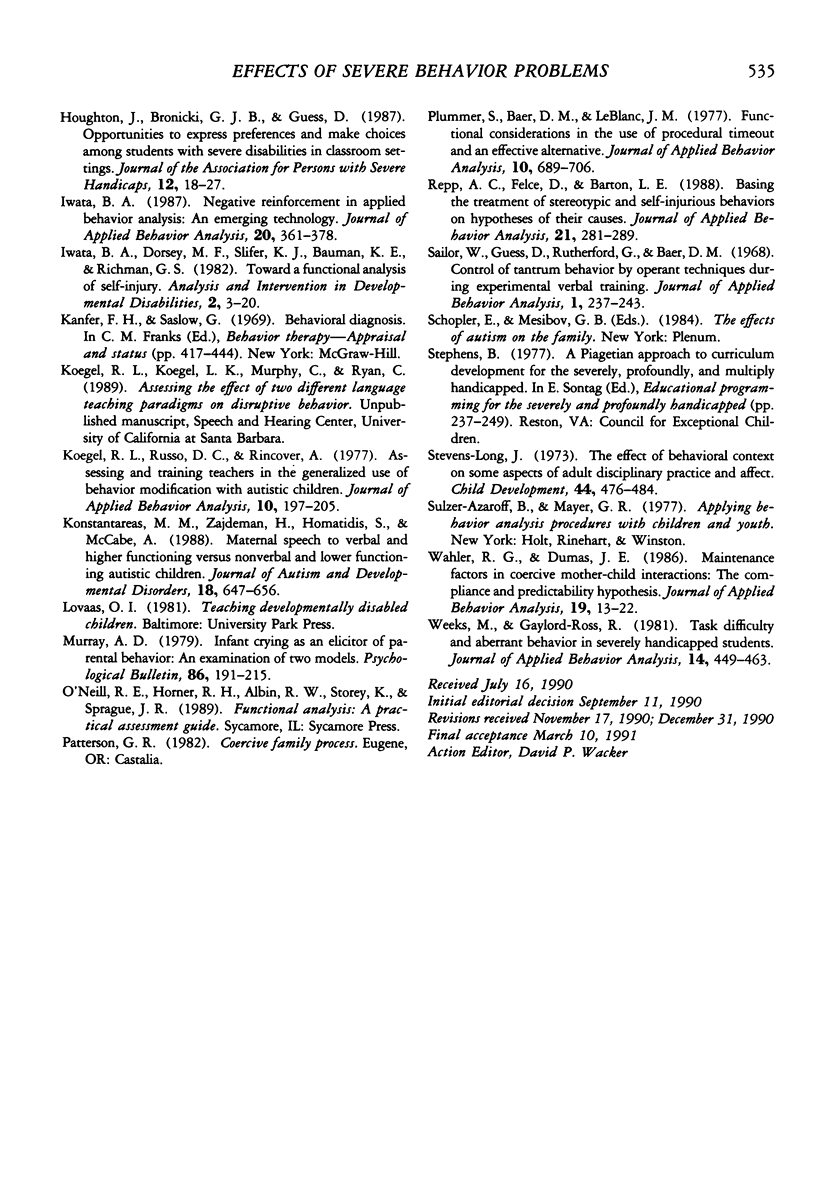
Selected References
These references are in PubMed. This may not be the complete list of references from this article.
- Carr E. G., Durand V. M. Reducing behavior problems through functional communication training. J Appl Behav Anal. 1985 Summer;18(2):111–126. doi: 10.1901/jaba.1985.18-111. [DOI] [PMC free article] [PubMed] [Google Scholar]
- Carr E. G., Newsom C. D., Binkoff J. A. Escape as a factor in the aggressive behavior of two retarded children. J Appl Behav Anal. 1980 Spring;13(1):101–117. doi: 10.1901/jaba.1980.13-101. [DOI] [PMC free article] [PubMed] [Google Scholar]
- Carr E. G., Newsom C. D., Binkoff J. A. Stimulus control of self-destructive behavior in a psychotic child. J Abnorm Child Psychol. 1976;4(2):139–153. doi: 10.1007/BF00916518. [DOI] [PubMed] [Google Scholar]
- Carr E. G., Newsom C. Demand-related tantrums. Conceptualization and treatment. Behav Modif. 1985 Oct;9(4):403–426. doi: 10.1177/01454455850094001. [DOI] [PubMed] [Google Scholar]
- Carr E. G. The motivation of self-injurious behavior: a review of some hypotheses. Psychol Bull. 1977 Jul;84(4):800–816. [PubMed] [Google Scholar]
- Durand V. M., Crimmins D. B. Identifying the variables maintaining self-injurious behavior. J Autism Dev Disord. 1988 Mar;18(1):99–117. doi: 10.1007/BF02211821. [DOI] [PubMed] [Google Scholar]
- Fagot B. I. The consequents of problem behavior in toddler children. J Abnorm Child Psychol. 1984 Sep;12(3):385–395. doi: 10.1007/BF00910654. [DOI] [PubMed] [Google Scholar]
- Groden G. A guide for conducting a comprehensive behavioral analysis of a target behavior. J Behav Ther Exp Psychiatry. 1989 Jun;20(2):163–170. doi: 10.1016/0005-7916(89)90049-9. [DOI] [PubMed] [Google Scholar]
- Hodapp R. M., Evans D. W., Ward B. A. Communicative interaction between teachers and children with severe handicaps. Ment Retard. 1989 Dec;27(6):388–395. [PubMed] [Google Scholar]
- Iwata B. A. Negative reinforcement in applied behavior analysis: an emerging technology. J Appl Behav Anal. 1987 Winter;20(4):361–378. doi: 10.1901/jaba.1987.20-361. [DOI] [PMC free article] [PubMed] [Google Scholar]
- Koegel R. L., Russo D. C., Rincover A. Assessing and training teachers in the generalized use of behavior modification with autistic children. J Appl Behav Anal. 1977 Summer;10(2):197–205. doi: 10.1901/jaba.1977.10-197. [DOI] [PMC free article] [PubMed] [Google Scholar]
- Konstantareas M. M., Zajdeman H., Homatidis S., McCabe A. Maternal speech to verbal and higher functioning versus nonverbal and lower functioning autistic children. J Autism Dev Disord. 1988 Dec;18(4):647–656. doi: 10.1007/BF02211882. [DOI] [PubMed] [Google Scholar]
- Murray A. D. Infant crying as an elicitor of parental behavior: an examination of two models. Psychol Bull. 1979 Jan;86(1):191–215. [PubMed] [Google Scholar]
- Plummer S., Baer D. M., LeBlanc J. M. Functional considerations in the use of procedural timeout and in effective alternative. J Appl Behav Anal. 1977 Winter;10(4):689–705. doi: 10.1901/jaba.1977.10-689. [DOI] [PMC free article] [PubMed] [Google Scholar]
- Repp A. C., Felce D., Barton L. E. Basing the treatment of stereotypic and self-injurious behaviors on hypotheses of their causes. J Appl Behav Anal. 1988 Fall;21(3):281–289. doi: 10.1901/jaba.1988.21-281. [DOI] [PMC free article] [PubMed] [Google Scholar]
- Sailor W., Guess D., Rutherford G., Baer D. M. Control of tantrum behavior by operant techniques during experimental verbal training. J Appl Behav Anal. 1968 Fall;1(3):237–243. doi: 10.1901/jaba.1968.1-237. [DOI] [PMC free article] [PubMed] [Google Scholar]
- Stevens-Long J. The effect of behavioral context on some aspects of adult disciplinary practice and affect. Child Dev. 1973 Sep;44(3):476–484. [PubMed] [Google Scholar]
- Wahler R. G., Dumas J. E. Maintenance factors in coercive mother-child interactions: the compliance and predictability hypotheses. J Appl Behav Anal. 1986 Spring;19(1):13–22. doi: 10.1901/jaba.1986.19-13. [DOI] [PMC free article] [PubMed] [Google Scholar]
- Weeks M., Gaylord-Ross R. Task difficulty and aberrant behavior in severely handicapped students. J Appl Behav Anal. 1981 Winter;14(4):449–463. doi: 10.1901/jaba.1981.14-449. [DOI] [PMC free article] [PubMed] [Google Scholar]


